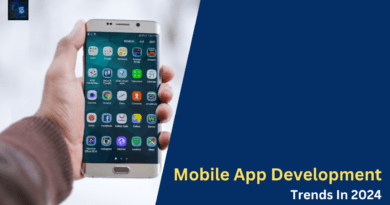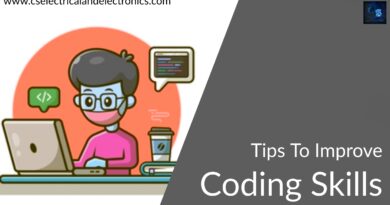What Is Django, Steps To Install, Benefits, Applications Of Django
Hello guys, welcome back to my blog. In this article, I will discuss what is Django, how to install Django, its benefits, applications, why it is very popular in the web development field.
If you have any doubts related to electrical, electronics, and computer science, then ask questions. You can also catch me on Instagram – Chetan Shidling.
Also, read:
- Top 14 Back-End Frameworks For Web And App Developers In 2022
- Top 14 Front-End Frameworks For Web And App Developers In 2022
- Top 10 Python Frameworks And Libraries For IoT Engineers
What Is Django
Django web apps allow you to get from concept to launch in a matter of hours. Django takes care of a lot of the tiresome parts of web development, so you can focus on your project instead of recreating the wheel. It’s free and open source.
Django was designed to make it as simple as possible for developers to get from idea to finished product. Django has several tools that can assist you with common web development tasks. User authentication, content management, site mapping, RSS feeds, and a host of additional tasks are all handled by Django right out of the box.
Django has been used to construct anything from content management systems to social networks to scientific computing platforms by corporations, organizations, and governments.
The following are the steps to install Django:
01. Get Python installed:
Python is required by Django because it is a Python Web framework. For more information. for further information Because Python comes with a lightweight database called SQLite, you won’t need to set up a database just yet. Download the most recent version of Python from https://www.python.org/downloads/ or use your operating system’s package manager.
02. Create a database
This step is required if you wish to work with a “large” database engine like PostgreSQL, MariaDB, MySQL, or Oracle. For additional details, see the database installation instructions on their official website.
03. Set up Django
Django may be set up in three different ways:
- Get an official release and install it. This is the ideal strategy for the vast majority of users.
- Get the Django version provided by your operating system distribution and install it.
- Get the most recent development version and install it. This option is for people who want the most recent features and aren’t afraid to experiment with new code. The development version may have new bugs, but disclosing them helps Django improve. Third-party package releases are likewise less likely than the most recent stable release to be compatible with the development version.
04. Verifying
To see if Django is visible to Python, type python from your shell. Then use the Python prompt to import Django:
>> import django
>> print(django.get_version())
Advantages of Django
01. It is written in Python:
Django is a Python programming language-based open-source web framework. Using Python’s syntax standards makes it easier for programmers to write clean, readable, and maintainable code for online applications. Additionally, by developing unique web applications without having to write any additional code, developers may save development time.
02. Quickens the creation of customized web applications:
Django is a web framework that employs a batteries-included strategy. Django has everything a developer needs to start building a bespoke web application right now. It includes code for database manipulation, HTML templating, URL routing, session management, and security, among other things. Using the batteries-included technique, developers may dramatically cut the time it takes to create a web application.
03. MVC programming paradigm is supported:
Django, like other modern web frameworks, follows the model-view-controller (MVC) design rule. The MVC programming style allows web application developers to separate the user interface (UI) and business logic layers. The technique also assists programmers in simplifying and speeding up the construction of large web applications by separating the user interface and business logic layers. Additionally, Django allows programmers to reuse business logic across several projects.
04. Works with all major operating systems and databases:
Online apps may now be accessed through several devices and platforms. Django facilitates the use of web applications by supporting popular operating systems such as Windows, Linux, and macOS. Django’s ORM framework, on the other hand, makes it simple for programmers to interface with several popular databases. They may also use the ORM framework to perform common database operations and move across databases without writing any additional code.
05. It contains numerous security features:
Cross-site scripting, SQL injection, and cross-site request forgery are just a few of the targeted security risks that Django can help developers defend their web applications from. At the same time, by eliminating common Python security mistakes, the web framework increases the security of online applications.
06. Scalable and extensible:
Django has been continuously developing to assist programmers in creating better and more modern web applications. By altering the web framework’s various components at the same time, Django developers may swiftly adapt, expand, and extend it. They can also disconnect or replace these disconnected components depending on the project’s particular requirements. Similarly, they can speed up the development of large and sophisticated web applications by linking a range of components.
07. It is backed up by a big and engaged community:
Django is a Python web framework that allows developers to significantly reduce the cost of creating online applications. It does, however, have a large and active development community behind it. To make web application development easier, the Django community publishes new plug-ins and code snippets regularly. Developers may quickly speed up custom web application development by using these resources offered by members of the Django community. Members of the community also aid developers in overcoming common web application development issues and concerns.
Applications Of Django
01. Application Development:
The Django to create web applications using the Python programming language. In the framework, templates, libraries, and APIS all work together. Django-based projects are typically inexpensive to maintain, modify, and add to, and they simplify a lot of web development.
02. Instagram:
This is a Django-based application that is known to most of us. The Django Project is at the heart of the company, and it invests a large amount of time and money into its development. The Django framework allows the company to manage massive amounts of data while also allowing them to introduce new features quickly without needing to understand the entire backend. It motivates the Instagram team to put more emphasis on user interface and user experience design. As a result, keeping the application’s reputation requires frequent updates and great features.
03. Disqus:
This Django project serves as a global blog comment hosting solution for thousands of websites. The comment system has a lot of features and works with almost every social media platform. The Django framework and Django extensions, as well as its integration with other technologies like databases, let the Disqus app do this.
04. Spotify:
Spotify is a Django-based music streaming service with outstanding device connectivity and machine-learning algorithms. Machine learning is implemented using Python. As a result, they need a framework that could operate with that technology as well. They also require robust web technology that can be updated fast while maintaining its integrity across several platforms.
I hope this article may help you all a lot. Thank you for reading.
Also, read:
- 100+ C Programming Projects With Source Code, Coding Projects Ideas
- 1000+ Interview Questions On Java, Java Interview Questions, Freshers
- App Developers, Skills, Job Profiles, Scope, Companies, Salary
- Applications Of Artificial Intelligence (AI) In Renewable Energy
- Applications Of Artificial Intelligence, AI Applications, What Is AI
- Applications Of Data Structures And Algorithms In The Real World
- Array Operations In Data Structure And Algorithms Using C Programming
- Artificial Intelligence Scope, Companies, Salary, Roles, Jobs
Author Profile
- Chetu
- Interest's ~ Engineering | Entrepreneurship | Politics | History | Travelling | Content Writing | Technology | Cooking
Latest entries
 All PostsApril 19, 2024What Is Vector CANoe Tool, Why It Is Used In The Automotive Industry
All PostsApril 19, 2024What Is Vector CANoe Tool, Why It Is Used In The Automotive Industry All PostsApril 13, 2024What Is TCM, Transmission Control Module, Working, Purpose,
All PostsApril 13, 2024What Is TCM, Transmission Control Module, Working, Purpose, All PostsApril 12, 2024Top 100 HiL hardware in loop Interview Questions With Answers For Engineers
All PostsApril 12, 2024Top 100 HiL hardware in loop Interview Questions With Answers For Engineers All PostsMarch 22, 2024Driver Monitoring Systems In Vehicles, Working, Driver Sleepy Alert
All PostsMarch 22, 2024Driver Monitoring Systems In Vehicles, Working, Driver Sleepy Alert








